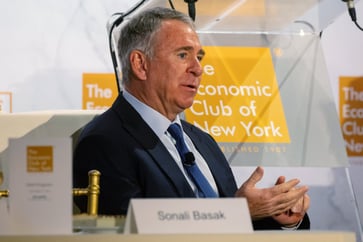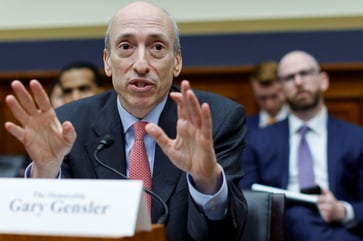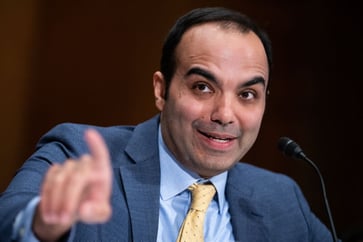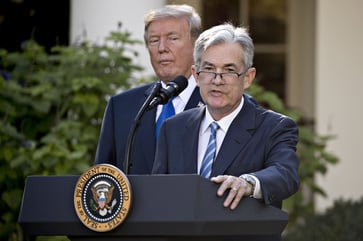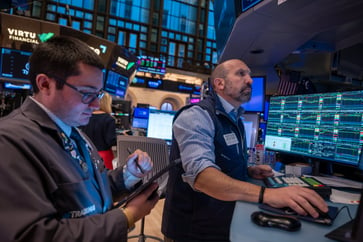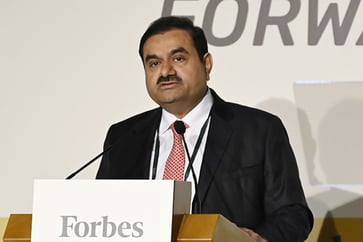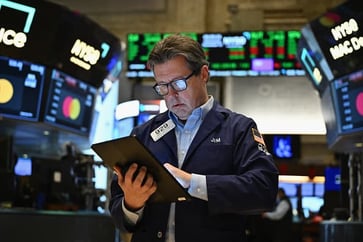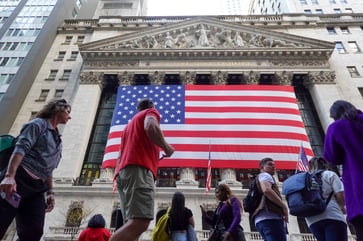The end of the peak interest rate era has arrived. Now, investors are focusing on these factors.
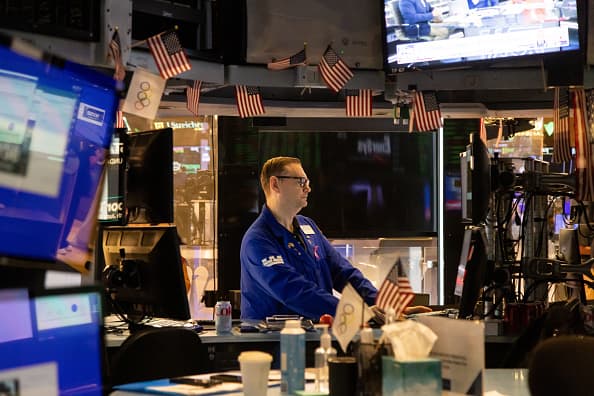
- The Federal Reserve is likely to follow suit with other central banks, including the European Central Bank, the Bank of England, the People's Bank of China, the Swiss National Bank, Sweden's Riksbank, the Bank of Canada, and the Bank of Mexico, in lowering key interest rates in September.
- Equities are expected to have a broadly supportive environment through the rest of the year and beyond, but there are several key risks that analysts are warning about.
- The monetary easing and short-term rate expectations will remain the focal point for currency markets.
This autumn, central banks worldwide will commence or prolong interest rate reductions, signaling the conclusion of an epoch characterized by unprecedentedly high lending expenses.
The U.S. Federal Reserve is likely to follow suit with other central banks, including the European Central Bank, the Bank of England, the People's Bank of China, the Swiss National Bank, Sweden's Riksbank, the Bank of Canada, and the Bank of Mexico, in lowering key interest rates, which have not been seen since before the Financial Crisis of 2007-2008.
Investors gained more confidence in the path of easing ahead, as money markets had already fully priced in a rate cut from the Fed.
The Fed Chair Jerome Powell stated at the annual Jackson Hole symposium that it is time for policy adjustments and that the central bank should now focus on keeping the labor market strong and making progress on inflation.
According to CME's FedWatch tool, the Fed is expected to make three 25 basis point cuts before the end of the year, keeping it in line with its peers, even though it is moving later.
The European Central Bank and the Bank of England are predicted to reduce interest rates by 25 basis points each three times this year, according to LSEG data. Despite this, all three central banks are expected to continue monetary easing in early 2025, despite ongoing concerns about services inflation.

The global economy is expected to have a lower-rate environment next year, with reduced inflation pressures. In the U.S., recession fear has decreased, and despite manufacturing weakness in countries like Germany, the U.K. is experiencing solid growth in services.
The performance of European and Wall Street markets in 2023 and 2024 is clear, with European stocks rebounding from a downturn in 2022 and gaining nearly 10% in the year-to-date, while Wall Street's index is 17% higher so far in 2024.
The VIX volatility index, which rose during the global equities decline in August, has now fallen below the average, according to Beat Wittmann, chairman and partner at Porta Advisors, who shared this information on CNBC's "Squawk Box Europe" on Thursday.
Wittmann stated that the market has recovered in terms of price momentum, valuations, and sentiment, but the market is expected to be choppy during the September and October period due to various factors such as geopolitics, corporate earnings, and bellwethers from the AI sector.
Equities are the asset class of choice for the rest of this year and beyond, according to Wittmann.
The U.S. jobs market data, with the next key report due Sept. 6, is crucial to monitor, according to Manpreet Gill, chief investment officer for Africa, Middle East and Europe at Standard Chartered, despite recent Fed commentary supporting the stock market.

Gill stated that our baseline remains optimistic about achieving a soft landing in the US, as long as we avoid the downside risk. This becomes more binary because equity earnings growth is still supportive, and we've had a recent clean-out of our positioning.
According to Gill, the last thing markets were seeking was rate cuts, or at least the expectation of them. Therefore, the outcome is positive, as it is a positive result.
Kepler Cheuvreux's head of economics and cross asset strategy, Arnaud Girod, stated on CNBC Tuesday that bonds have had a robust summer and equities have rebounded. However, investors must now make a "leap of faith" regarding the future direction of the U.S. economy and the speed of interest rate cuts.
The likelihood of negative data and weakening earnings momentum increases with more rate cuts, making it challenging to be overly optimistic, he stated.
Girod stated that the stock market has shown that it is unconcerned with interest rates since Big Tech has performed well despite the peak rate months, which conventional wisdom suggests should negatively affect growth and technology stocks. As a result, Nvidia earnings will be a crucial event to monitor, according to Girod.
FX focus on rates
Jane Foley, head of foreign exchange strategy at Rabobank, stated via email to CNBC that in currency markets, the interplay between inflation, rate expectations, and economic growth will continue to receive attention.
If the euro appreciates against the dollar, it may affect market expectations about the timing of ECB rate cuts, according to her.
The outcome of the U.S. election will have consequences for the Fed. If Trump is elected, he may utilize an executive order to raise tariffs swiftly, which could increase inflation risk and potentially shorten the Fed's easing cycle.
The U.S. dollar may strengthen into the spring as Rabobank predicts four Fed rate cuts between September and January, followed by a hold for the rest of 2025.
Services sector inflation, caused by wage inflation, will likely limit the BOE's ability to cut interest rates quickly.
Markets
You might also like
- Precious metal investors are being distracted by the allure of the crypto rally, according to State Street.
- Henry Schein can improve profits by implementing the suggestions of activist Ananym.
- Artificial intelligence could require more electricity from data centers than cities.
- Scott Bessent, a hedge fund executive, is chosen by Donald Trump for the position of Treasury secretary.
- A longer walk to the terminal gate for airline passengers may occur.






